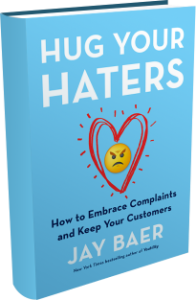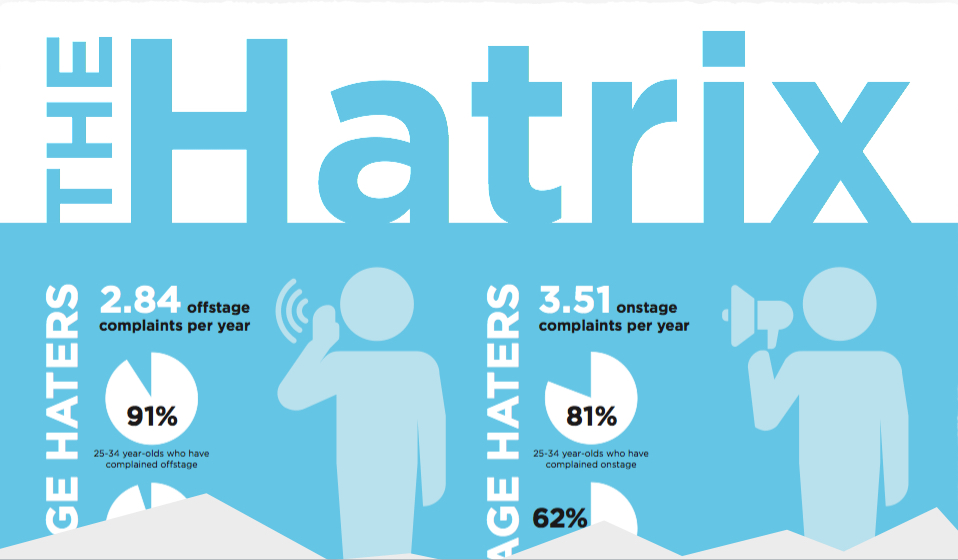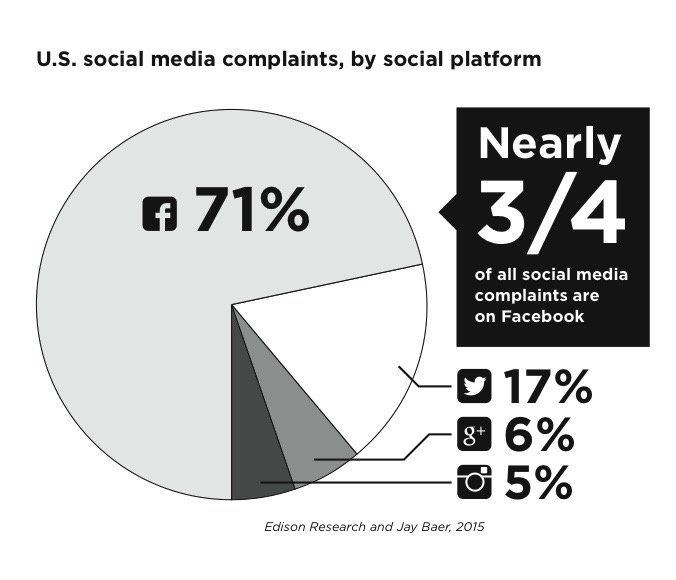Keep Your Customers
Complaints. Do you love them?
Haters. Do you hug them?
If you are angry at a business, what do you do? Take to Twitter? Facebook?
Whether angry, annoyed, or frustrated, ignoring customer concerns is impossible in the social media age.
When the Customer Hates You
But what do you do when a customer hates you?
Jay Baer shares the eye-opening results of an extensive study on customer service in the social age. Yesterday’s techniques are no longer enough.
Jay is a New York Times best-selling author and the founder of Convince & Convert, a strategy consulting firm helping companies gain and keep more customers. Since 1994, he has advised over 700 companies ranging from Caterpillar to Nike. His latest thought provoking book, Hug Your Haters: How to Embrace Complaints and Keep Your Customers is a contrarian and modern view of creating extraordinary customer service.
Why Customer Satisfaction Hasn’t Budged in Decades
 You share a statistic that customer satisfaction hasn’t improved since the 1970’s. After all the books, the seminars, the new programs, nothing has changed. Why not? What are companies missing?
You share a statistic that customer satisfaction hasn’t improved since the 1970’s. After all the books, the seminars, the new programs, nothing has changed. Why not? What are companies missing?
Customer service has historically played out in private. So even though companies have always said they emphasized it (nobody says “we deliver shoddy customer service” even when they do) they haven’t truly HAD to emphasize it. And doing it well is complex and somewhat expensive in the short term. So nothing has ever really changed. But now, customer service is becoming a spectator sport, and the truths of good vs. bad customer service are out in the open and impacting buying decisions.
Let’s say you are about to deal with a customer complaint. How do you get in the right mindset?
Don’t take it personally. Remember that the customer is using THEIR time to try to tell you how to make your company better. And remember that you don’t know what the customer has been through. And then embrace that answering a complaint increases customer advocacy, every time.
Social media has given on-stage haters a platform like never before. Businesses were not prepared. What’s the first piece of Jay Baer advice you usually give a business?
This may be a paradox, but our advice at Convince & Convert to companies looking to improve their social media customer service is to first make sure their offstage customer service is outstanding. If you’re not great at phone and email, all you’re going to do is push people from those channels to social media and back again. Be a great walker before you run!

5 Obstacles to Great Customer Service
You share 5 obstacles to providing great service that must be handled in order to hug your haters. Is there one that more businesses struggle with than others?
It depends on the channel. With the legacy contact mechanisms like telephone and email, it’s more an issue of not truly believing in the importance of great customer service. In the vast majority of businesses, customer service is viewed as a necessary evil, not a competitive differentiator that makes money. Thus, there isn’t really a culture of sincere hospitality. We can easily name companies that are great at customer service because they are so rare.
With the newer, online channels like social media and review sites, the biggest obstacle is coverage. It can take a lot of resources to be present in all channels, and companies have not historically viewed it as necessary (or even important) to do so. I sincerely hope that the research in Hug Your Haters proves the folly of that philosophy because every time you ignore a customer complaint – anywhere – you take a bad situation and make it worse.
5 Obstacles to Providing Great Service
1: Too Many Channels
2: Too Much Feedback
3: Offended by Feedback
4: Fear of Getting Scammed
5: No Customer Experience Culture
Know the Rule of Reply Only Twice
Your book includes a playbook for onstage haters that is terrific. Would you share the Rule of Reply Only Twice? Why stop at twice?
Jay Baer’s Rule of Reply Only Twice states that you never, ever, ever, ever, ever reply more than twice to a customer in a public, online setting. Why? Because it’s a waste of valuable resources. If someone says “I love you,” you should acknowledge that, but you don’t need to answer more than twice.
The more likely scenario is that someone says “I hate you.” You answer (always) and apologize. The customer answers back with some version of “no, I REALLY hate you.” At which time you answer back a second time, and offer a resolution or in-depth communication option (Phone, email, et al). After that, if they come back a third time, you should just walk away.
Do not get sucked into a vortex of negativity online. Remember, you of course want to make the customer happy, but the more important element of online customer service are the onlookers. Once you are on record as listening and responding, you’ve proven that you care. Getting into a tit-for-tat online is counter-productive.
Why is it we always seem to point out the same few businesses when talking about great customer service? Zappos and Zingerman’s come to mind for me.
Because there are so few companies that genuinely prioritize service and embrace it as a competitive differentiator. Globally, we spend some $500 billion per year on marketing, and $9 billion per year on customer service. So, when you find businesses that look at that equation as fundamentally flawed (like the examples you mention) they stand out.

I didn’t realize the statistics regarding Facebook and Twitter. Most complaints are coming in on Facebook, but companies have the structure oriented to Twitter. What do you see happening because of this? What’s the future?
It really is fascinating. Facebook is by far the largest source of online complaints. And you’re right in that so many companies think of Twitter as the primary social media customer contact mechanism. They are wrong and will only get more wrong as Facebook starts to use WhatsApp and Facebook Messenger as other customer service channels. Twitter may continue to be the channel of choice for the tech set and thus will be very important for some types of businesses. On the whole Facebook is much more critical. Yet, most businesses think of Facebook as a marketing tool, not a customer retention tool.

